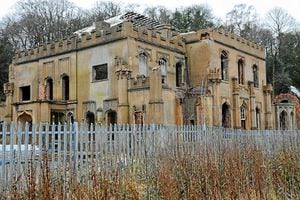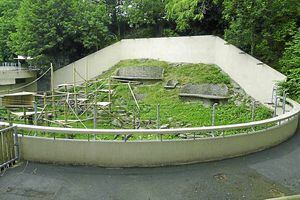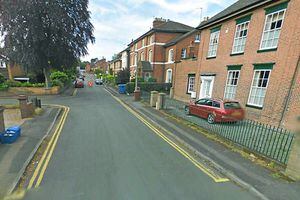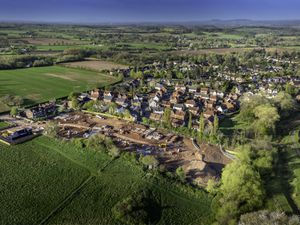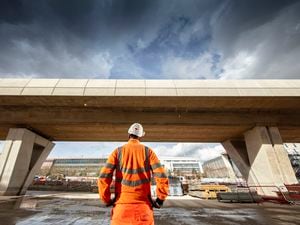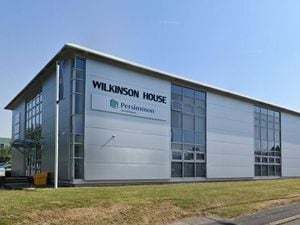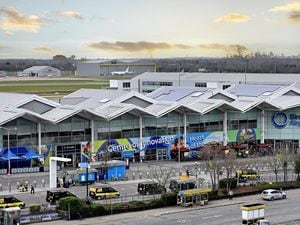Landmark buildings across the region are at risk
Bear pits, stately homes, churches and factories are among almost 60 landmarks in the region at risk of being lost, English Heritage has said.
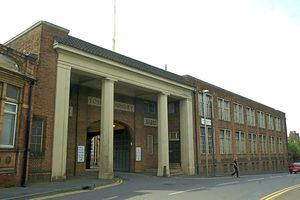
The organisation has published its annual At Risk Register of 6,000 buildings and historic sites across the country.
The figure includes heritage sites with the highest levels of protection, Grade I and II* listing, across the country but those with the lower Grade II listing have only been included in London.
English Heritage also announced a programme to assess England's 345,000 Grade II listed buildings, funding between nine and 15 pilot surveys with local authorities and other groups to find out which such structures are at risk.
On average buildings are £370,000 short of what they need to bring them up standard.
Grade II* listed buildings at risk include Great Barr Hall, on the Walsall-Sandwell border, which has been standing empty since 1978 and has fallen into a state of disrepair.
It was bought earlier this year by a mystery consortium which has appointed Lapworth Architects to draw up options for its future and manage the project.
Its inclusion in the list of buildings causing concern for English Heritage is not a surprise, said Peter Allen, of the Great Barr Hall Action Committee.
He said the amount of damage there supported his belief the building should not be restored but should be rebuilt on its 18th century footings, when it was a renowned meeting place for The Lunar Society.
"It is in a state, it's got no roof, no woodwork and it's absolutely derelict," he said.
"It would be much more sensible to try to rebuild it on the original footing rather than restore it."
He has previously claimed rebuilding it on its 18th century footings would give it a great association with The Lunar Society and could make it a "major international tourist attraction".
The brown bear pits at Dudley Zoo, dating back to 1936, have appeared on the risk register for years but bosses are confident that work scheduled for 2014 will secure them for the future following the approval of £1.15 million Heritage Lottery Fund cash.
The work will take place following the completion of restoration work to the zoo's Safari Shop and the main entrance.
Zoo chief executive Peter Suddock said: "The bear ravine is hugely significant. It is one of the largest iconic buildings and is the most complex of the structures.
"Its importance is fully recognised and is reflected in the early phase of the restoration programme.
"The kiosk will be repaired at the same time as it is an adjacent structure and easy to restore concurrently."
Conservation areas such as Talbot Street in Rugeley as well as the town centre have also been flagged up.
Rugeley town councillor Tim Jones said: "It doesn't surprise me that English Heritage has concerns about the town centre.
"We have found Cannock Chase District Council extremely unhelpful – they seem to take the view that Cannock should be financed by Cannock Chase and Rugeley should be financed by the town council which has parlous resources.
"We need investment in street furniture, things like that which attract people to a town centre. And we have parking charges whereas parking in Hednesford is free.
"It's most certainly welcome that English Heritage have highlighted the fact there is a problem."
A new entry on the list this year is St Leonard's Church in Bilston, which has caused concern due to leaking parapet gutters.
Lord Dennis Turner, who represented the area for 18 years as an MP, said: "The church is vital to Bilston and over the years there has been a sterling effort to raise funds.
"It is welcome that English Heritage have identified the church as worth preserving and one in need of support."
English Heritage's director of heritage protection Dr Edward Impey said that in the current climate of spending cuts, efforts to save buildings may have to focus on "holding" measures.
Buildings could be saved with innovative schemes by people to find ways to preserve and find new use for structures, he said, adding "there has never been a time when imagination and commitment has been more important".
Examples from elsewhere in the country include Margate's Grade II* Dreamland rollercoaster that was built in 1919-20 but was badly damaged by fire in 2008.
There are plans, supported by English Heritage and the Heritage Lottery Fund, to breathe new life into the Dreamland amusement park and scenic railway in the Kent seaside town, and it is hoped the site has a future off the at-risk register.
Britain's first atomic bomb store on Thetford Heath, Barnham, Suffolk, a Grade II* scheduled monument, has also been added to the at-risk register.
From the mid-1960s onwards the site's watchtowers were vandalised and they and the 66 kiosks used for storing nuclear components fell into disrepair.
Simon Thurley, chief executive of English Heritage, said: "We launched our first-ever Buildings at Risk register in 1998.
"We have expanded it over the years to include archaeology, monuments, gardens, conservation areas, places of worship, wrecks and battlefields.
"Now with the economic climate putting more pressure than ever on Grade II buildings, it's time to plug the one remaining gap."
At risk sites across the region
Dudley
Brown bear pit and kiosk at Dudley Zoo, Grade II* listed – repairs imminent.
Triangular crane, Bumble Hole Boat Yard – 19th century structure, poor condition.
The Old Foundry, Lowndes Road, Stourbridge, Grade II* – 19th century iron foundry, due to become a medical centre.
Church of St James the Great, Salop Street, Grade II – Poor. A grant for repairs was offered but the parish could not get match funding.
Church of St John the Evangelist, St John's Road, Grade II – Closed for safety reasons in 2002. Worship now in parish hall.
Presbyterian Chapel, Lower High Street, Stourbridge, Grade II – Brickwork and cast iron windows in poor condition.
The Redhouse, Whitehouse and Newhouse glassworks, Dudley – Unsatisfactory and declining.
Wordsley Church – Deteriorating.
Sandwell
Soho Foundry, Smethwick, Grade II* – Dating from 1795, in need of stabilising.
Waterloo Hotel, Shireland Road, Smethwick, Grade II* – Closed and boarded up, recently broken into.
Chances Glassworks, Smethwick – Generally unsatisfactory.
Engine Arm Aqueduct, Warley; remains of the Boulton and Watt Soho foundry and mint, Birmingham Canal, Smethwick, and Smethwick Engine House – All generally unsatisfactory.
High Street, West Bromwich Conservation Area – Very bad and deteriorating.
Market Place, Wednesbury – Deteriorating.
Walsall
Great Ball Hall and Chapel, Grade II* listed building – Gothic house from 1777, empty since 1978, suffering vandalism.
St Matthew's Church, Grade II* – New entry due to "high level repairs".
Life and Light Misson Church, Union Street, Willenhall, Grade II listed building – Water is getting inside due to loose render.
Bloxwich High Street; Bradford Street; Bridge Street; Caldmore Green; Church Hill; Elmore Green and Willenhall conservation areas – All described as "Very bad".
Cannock Chase
Rugeley Town Centre; Talbot Street and Lichfield Street – All deteriorating.
Lichfield
Colton House, Grade II* listed walls and gatepiers dating from 1730 – In poor condition.
Angel Croft Hotel, Grade II* listed building – Empty and damaged from break-ins.
Church Tower north of Church of St John, Shenstone, Grade II* listed – Derelict.
Manor house, Hamstall Ridware – Extensive, significant problems.
Fazeley and Bonehill Conservation Area – Very bad but improving.
Wolverhampton
Graiseley Old Hall, Grade II* listed building from the 15th century – Cracking to external elevations, repairs being carried out.
Greyhound and Punchbowl Inn, Bilston, Grade II* listed – Poor condition.
St Leonard's Church, Bilston, Grade II listed building – A new entry, leaking parapet gutters affecting plaster inside.
South Staffordshire
Stable Court at Four Ashes Hall, Enville, Grade II* listed building – The building remains in a "parlous state".
The Conservatory, Hilton Park, Hilton, Grade I listed building – Derelict.
Roman fort near Eaton House, Brewood – Condition unknown.
Roman villa near Engleton Hall, Brewood – Generally unsatisfactory.
Roman camps near Greensforge, Kinver – Condition unknown.
Camp north east of Stretton Mill, Lapley – Condition unknown.
Roman camp, Kinvaston, – Erosion.
Roman camps near Water Eaton, Penkridge, and near Swindon Iron Works – Condition unknown.
Penkridge conservation area – Very bad.
Wombourne conservation area – Poor.
Stafford
Remains of Creswell Chapel, Grade II listed – 13th century chapel in poor condition.
Trentham Tower, Sandon, Grade II* listed – Folly from 1840 in fair condition.
Remains of Trentham Hall, Grade II* listed – Awaiting hotel development.
St George's Hospital conservation area – Deteriorating significantly.
Stone conservation area – Poor.
Wyre Forest
Baches Forge, Churchill and Blakedown, Grade II listed building – Mill in poor condition but machinery works
Ribbesford House, Ribbesford, Grade II* listed – Fair condition but needs repairs.
Bridgnorth
48 Mill Street, Grade II* listed building from 1675 – Scaffolding due to failing tiles.
Shifnal
Roman camps south west of Stoneyford Cottages, Roman fort 300m east of Drayton Lodge Farm and Uxacona Roman site – Condition unknown.
